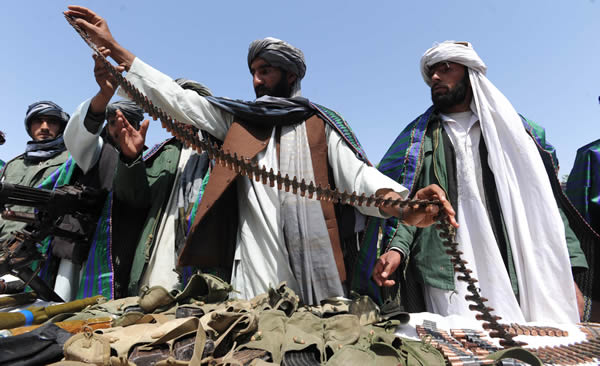It’s common knowledge that Iran has ties to Shi’ite militias fighting ISIS in Iraq, while recently additional reports by EIFA iraq-malikis-gangs-unseat-sunnis may suggest that Iran may even be strengthening ISIS in order to contribute to the mayhem in Iraq. It is also common knowledge that Iran supports the Assad regime, fighting to violently retain its despotic grip over a disintegrating Syria. A recent report in The Irish Times titled iranian-support-of-assad-regime-in-syria-amounts-to-billions reveals more about the scope of this support. Their involvement in Yemen does not need further elaboration.
But now, apparently, Iran is involved in military conflicts destabilizing the region in a new way (through proxies, naturally) – by supporting, of all groups, the fundamentalist Sunni Taliban.
According to a recent and widely-cited report by The Wall Street Journal, the Taliban – which itself finds its origins in mujahideen armed and trained to fight the Soviets in Afghanistan – is now “quietly” being recruited, equipped, and trained by Iran to counter ISIS. Taliban commanders in Afghanistan told the news outlet that they are receiving salaries, guns and sponsorship from Iran (which is clearly making good use of its funds amid high inflation rates).
Image may be NSFW.
Clik here to view.
Iran’s new strategy, which is reportedly meant to counter both US and ISIS threats/influence, does not give a thought to maintaining Afghanistan’s fragile stability (in fact, it actively assists the Taliban in its bid to return to power) – and belies Tehran’s so-called commitment to the stability of another region, the Middle East.
This development doesn’t bode well for the nuclear agreement, either, as WSJ pointed out – “potentially setting up a new regional dynamic in which Tehran, unfettered by punitive economic sanctions and flush with new resources, would be able to pursue an activist agenda through its proxies in and around the Middle East.”
The Taliban may be the jihadist rivals of the Islamic State, but are they really that different? Is one jihadist group better than the other? And can the Middle East and surrounding regions ever be truly stable while these murderous militant groups (and plenty of others, many of them Iranian proxies) race to out-arm and out-fight each other, undermining (or outright destroying) the area’s sovereign states?
Filed under: Iranian Foreign Relations, Iranian Politics, IRGC, Media Coverage, Military Image may be NSFW.
Clik here to view.
 Image may be NSFW.
Image may be NSFW.Clik here to view.
 Image may be NSFW.
Image may be NSFW.Clik here to view.
 Image may be NSFW.
Image may be NSFW.Clik here to view.
 Image may be NSFW.
Image may be NSFW.Clik here to view.
 Image may be NSFW.
Image may be NSFW.Clik here to view.
 Image may be NSFW.
Image may be NSFW.Clik here to view.
